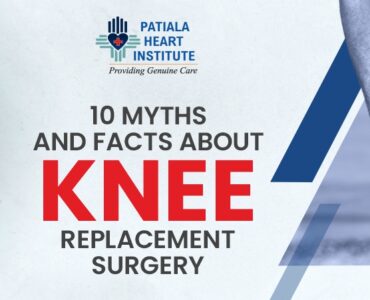Arthritis is a prevalent and debilitating rheumatic condition affecting millions of people worldwide.
In fact, its impact is felt on a significant scale, affecting over 210 million people, constituting approximately 15% of India’s population.
The prevalence of arthritis surpasses diseases like diabetes and cancer, underlining the critical need for awareness and understanding of this widespread health challenge.
What is Arthritis?
Arthritis refers to over 100 rheumatic conditions that involve inflammation of one or more joints, hindering range of motion.
The word arthritis means “inflammation of joints”, and the inflammation may also affect the ligaments and tendons surrounding the joint.
Its symptoms usually develop over time or can also appear instantly, impairing the person’s ability to perform daily activities. The most common types of arthritis include osteoarthritis, rheumatoid arthritis, psoriatic arthritis, juvenile arthritis, gout, and spondyloarthritis.
Common Causes and Risk Factors of Arthritis
The causes of arthritis vary depending on its type. However, the exact cause of most types of arthritis is unknown. You may develop arthritis if you
- have a family history of arthritis
- experience repetitive joint injuries or trauma
- play a sport that exerts stress on your joints
- have certain underlying medical conditions like autoimmune disorders
- are of older age, as arthritis risk increases with age
Certain risk factors can also contribute to an increased risk of arthritis
- Age: The risk of arthritis tends to increase with age, particularly for osteoarthritis
- Genetics: A family history of arthritis can elevate the likelihood of developing the condition
- Gender: Arthritis is more prevalent in females, especially rheumatoid arthritis, while gout is more common in males.
- Lifestyle: Sedentary lifestyles, lack of physical activity, and smoking can increase the risk of developing arthritis.
- Weight: Being overweight or obese can put extra stress on your joints, especially knees, hips, and spine, which can lead to osteoarthritis.
Common Types of Arthritis
Osteoarthritis
Osteoarthritis is the most common type of arthritis, affecting millions worldwide. It primarily involves the breakdown of joint cartilage and the underlying bone. Over time, this leads to pain, stiffness, and reduced mobility, most commonly seen in weight-bearing joints like the knees, hips, and spine.
Common symptoms of osteoarthritis typically develop gradually and include joint pain, stiffness, tenderness, limited range of motion, and a grating sensation during movement. As the condition progresses, joint deformities may occur.
Rheumatoid Arthritis
It is an autoimmune disease that primarily affects joints. The immune system mistakenly attacks the body’s own tissues, leading to joint inflammation, pain, and potential damage to other organs.
Symptoms of rheumatoid arthritis include joint pain, stiffness, fatigue, and swelling. Over time, the affected joints can become deformed and lose functionality, significantly impacting a person’s quality of life.
Psoriatic Arthritis
Psoriatic arthritis, also known as psoriatic arthropathy or arthropathic psoriasis, is a type of inflammatory arthritis that affects some individuals with psoriasis, a chronic skin condition. It can affect various joints in the body and ranges from mild to severe. The condition causes pain and swelling in the areas where the bone connects with ligaments and tendons. If left untreated, psoriatic arthritis can cause permanent damage to the joint.
Common symptoms of psoriatic arthritis include joint pain, stiffness, swelling, skin lesions, nail changes, and uveitis.
Gout
Gout is a form of arthritis caused by the accumulation of uric acid crystals in the joints. It typically affects the big toe but can involve other joints as well. Gout can either occur in episodes or become chronic if uric acid levels in the body are not reduced.
Gout symptoms include intense joint pain, inflammation, redness, and tenderness in the affected area. Gout attacks can be sudden and severe and may last a week or two.
Juvenile Arthritis
Juvenile arthritis occurs in children under the age of 16. There are several types of juvenile arthritis, but the most common type is juvenile idiopathic arthritis (JIA). Juvenile idiopathic arthritis is an autoimmune disease in which the immune system attacks synovial fluid and synovium, a tissue lining inside the joint.
Juvenile idiopathic arthritis symptoms may include joint pain, swelling, stiffness, fever, rash, and fatigue. It can affect one or many joints and may persist for a few months or throughout childhood.
Ankylosing Spondylitis
Ankylosing spondylitis is an inflammatory arthritis that primarily affects the spine, causing inflammation of the vertebrae. It often starts in the lower back and can progress to the neck and other parts of the spine.
Symptoms include back pain and stiffness, which worsen over time and can lead to a stooped posture. Ankylosing spondylitis can also affect other joints and organs.
Modern Orthopaedic Interventions
There is no cure for arthritis, but medical interventions can help you manage the condition and its symptoms. Best treatments for arthritis include:
Medication
Non-Steroidal Anti-Inflammatory Drugs (NSAIDs): NSAIDs are commonly used to relieve pain and reduce inflammation in arthritis. They can be effective for managing mild to moderate symptoms.
Disease-Modifying Antirheumatic Drugs (DMARDs): DMARDs are one of the most widely used medicines for the treatment of rheumatoid arthritis as they suppress the immune system and reduce inflammation.
Biologics: Biologic drugs are a class of medications that target specific immune system components responsible for inflammation, providing targeted relief for arthritis symptoms.
Corticosteroids: these medications reduce inflammation and suppress the immune system so it doesn’t attack joints.
Physical Therapy and Exercise
Physical Therapy: Physical therapy tailored to individual needs and conditions can help improve joint mobility, reduce pain, and strengthen muscles, providing long-term benefits for arthritis patients.
Exercise: Joint-friendly physical exercises like walking, cycling, and swimming can help reduce long-term symptoms of arthritis.
Lifestyle Modifications
Weight Management: Maintaining a healthy weight can significantly reduce the stress on weight-bearing joints, alleviating arthritis symptoms and preventing further damage.
Diet and Nutrition: A healthy, balanced diet with a focus on anti-inflammatory foods can help manage arthritis symptoms and promote overall well-being. Include foods good for joint health, like nuts, seeds, whole grains, olive oil, and fish.
Surgical interventions
Total Joint Replacement: Total joint replacement is a surgical procedure in which a damaged or arthritic joint is replaced with an artificial implant to restore mobility and alleviate pain.
Joint Fusion: Joint fusion, also known as arthrodesis, is a surgical technique that involves fusing two bones of a joint to reduce pain and enhance stability, often used for severely damaged or arthritic joints.
Osteotomy: Osteotomy is a surgical procedure that involves cutting and reshaping a bone to correct deformities, improve joint alignment, or redistribute weight-bearing forces. The procedure is often performed at the early stages of arthritis or to delay joint replacement.
Synovectomy: It is a surgical procedure for complete or partial removal of the synovial membrane, a tissue lining the joint, to reduce inflammation and pain associated with synovitis, rheumatoid arthritis, psoriatic arthritis, and juvenile idiopathic arthritis.
Conclusion
Arthritis is a complex and widespread condition that affects people of all ages and backgrounds. Recognizing early signs, seeking timely consultation, and adhering to appropriate treatments can help manage arthritis effectively, improving mobility and quality of life.
With a proactive approach and the right interventions, individuals can regain control over their lives, alleviating pain and reclaiming the freedom to engage in daily activities with ease and comfort.
Are you suffering from arthritis and struggling with mobility issues? Reach out to our Orthopaedic Specialists at Patiala Heart Institute for expert guidance and tailored treatment plans.
Contact us today to schedule a consultation and start your journey towards a pain-free, active life.
Can Arthritis Be Prevented?
While certain types of arthritis, like osteoarthritis, may not be entirely preventable, you can reduce the risk or delay its onset by maintaining a healthy weight, staying physically active, avoiding injuries, and adopting a balanced diet rich in anti-inflammatory foods.
What Foods Should Be Avoided If One Has Arthritis?
Individuals with arthritis should avoid foods rich in purines, such as red meat, seafood, and alcohol, as these foods can increase uric acid levels and trigger gout attacks. Additionally, processed and fried foods, sugary beverages, and excessive consumption of dairy products may worsen inflammation and arthritis symptoms.







